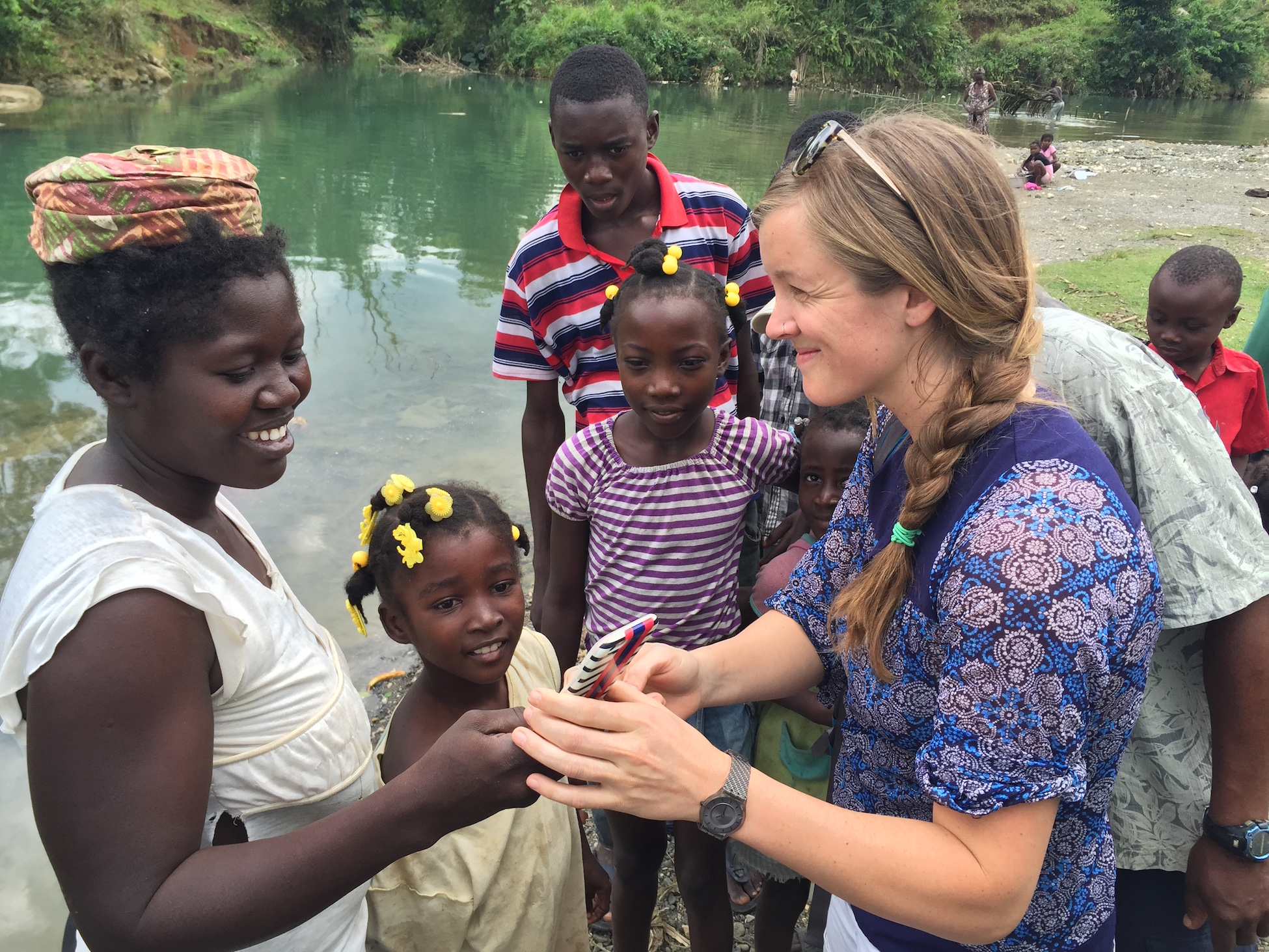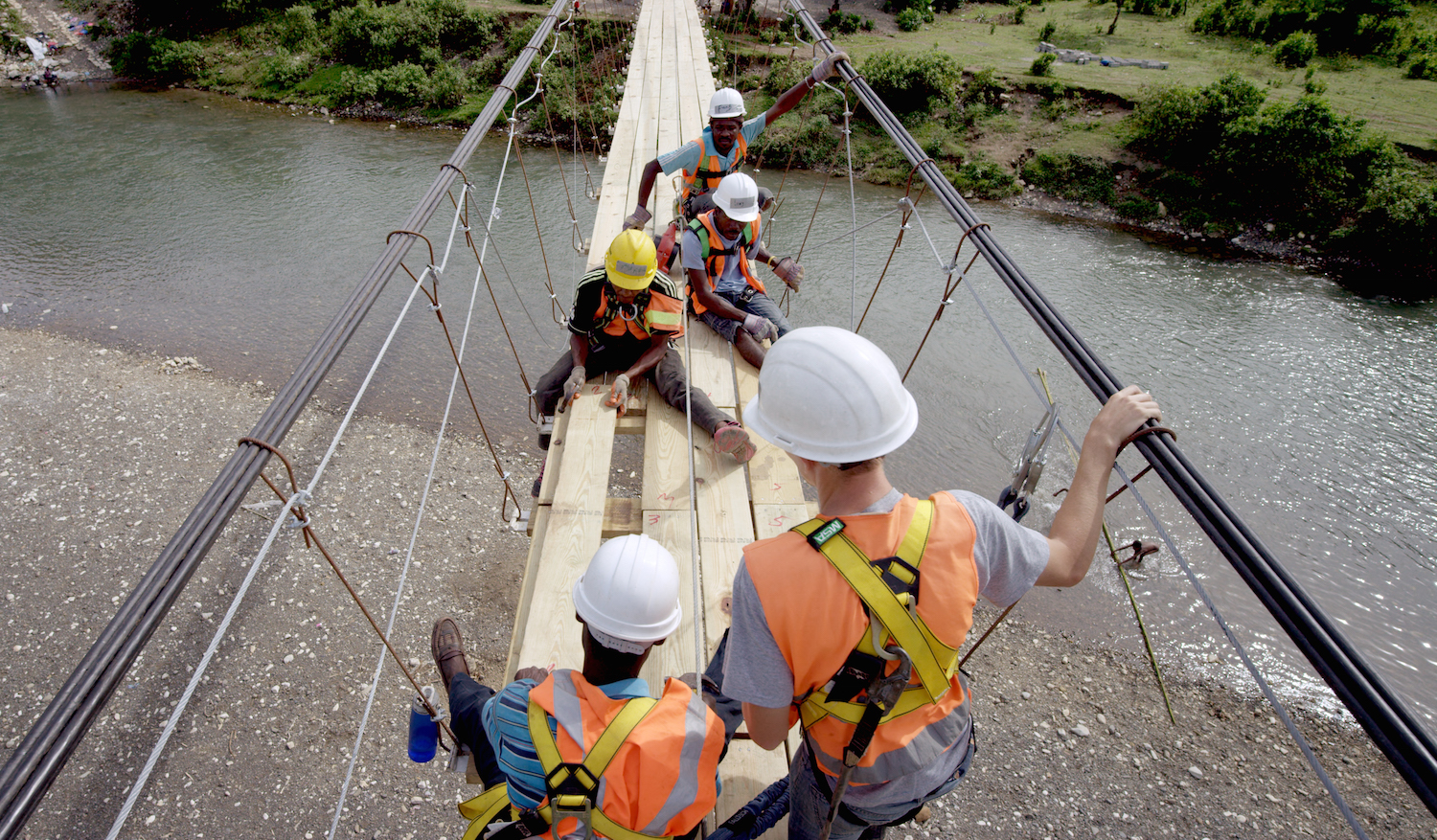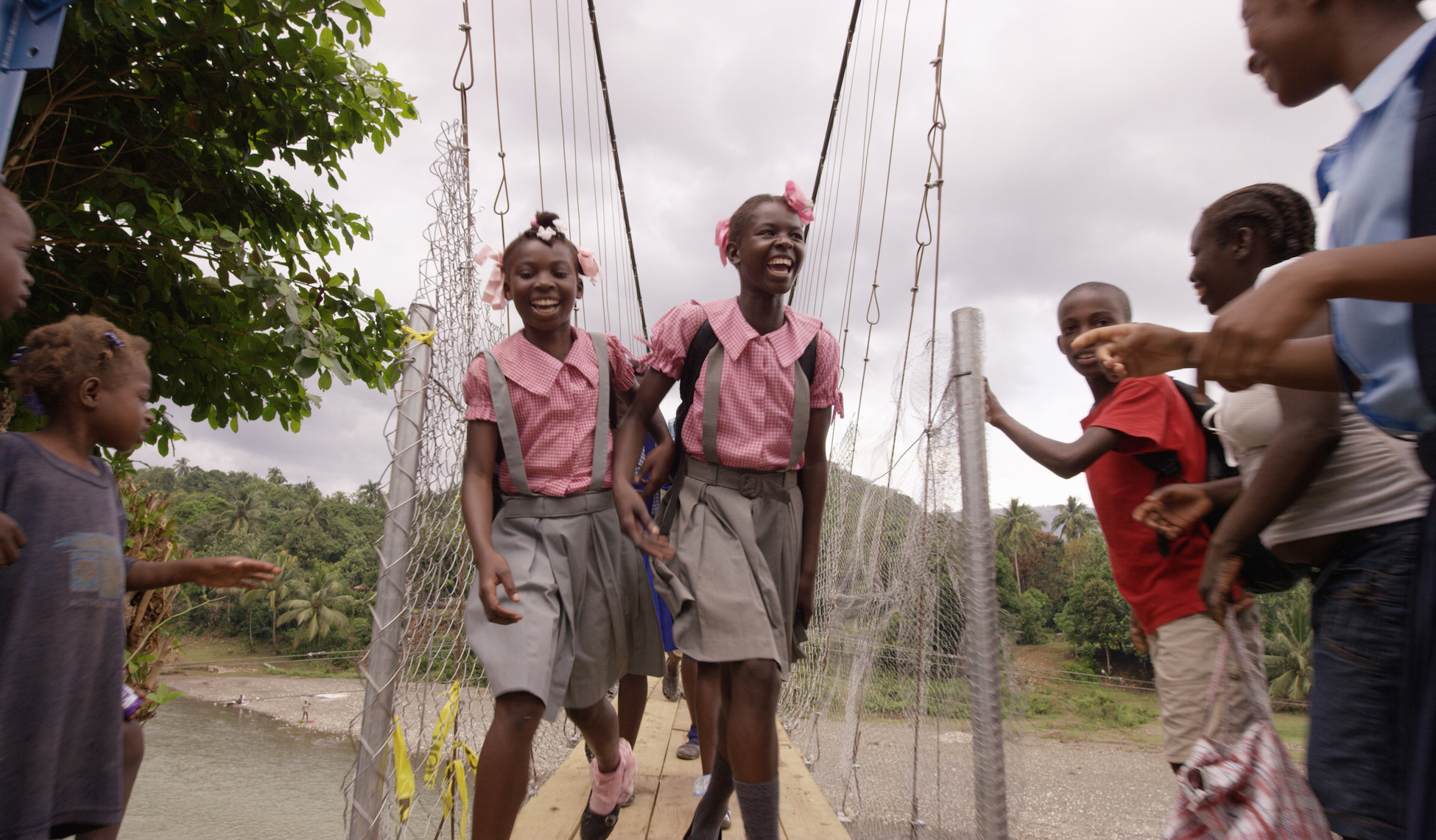While those of us leading urban lives often take the bridges and roads that twine through our cities for granted, an estimated 1 billion people around the world live without access to any kind of transportation network at all. Even seemingly simple structures such as basic footbridges can have major ripple effects through these communities–lowering mortality, not only because people no longer have to brave ripping river currents but because people can suddenly reach medical clinics they couldn’t before, as well as raising education levels because kids can more easily get to schools.
The journey of Dream Big makes a rousing stop on one of the most stunningly beautiful island nations in the world, the Caribbean country of Haiti. It is here that a local community and the international organization Bridges to Prosperity have come together to put an immediate, fate-changing halt to a deadly situation–lives needlessly lost each year as men, women and children attempt to cross a fast-moving river just to get to their jobs, schools, doctors or other villages. Here, the raising of a new footbridge means more than most people can imagine, leading both to safety and fresh opportunities.
In Haiti, MFF met up with Avery Bang. “As soon as we met Avery, we all fell in love with her spirit,” says Greg MacGillivray. “When my wife Barbara and I went to scout in Haiti, we were very moved by what she and her team are accomplishing with the bridges they build. She works arm-in-arm with the town’s people, so it’s a fully local effort. We had the chance to watch as this village built a strong, modern footbridge almost entirely out of recycled or donated materials. It’s a beautiful thing to see that just one modest structure in the right place can change so many lives.”
Haiti is still recovering slowly from the 7.0 earthquake that rocked the island nation in 2010, and the MFF team saw reminders of the devastation and frustrations with the recovery process all around them, but Director of Photography Brad Ohlund notes that people in the village were warm and welcoming to the crew. “The real joy of what we do is when you have that personal interaction with real people in local communities,” says the cinematographer. “We had such a great time getting to know the people building the bridge.”


Ohlund continues: “The Haitians might not have much in the way of material things but they have such tremendous spirit. We really experienced that and we wanted to capture it. We got there at the perfect time in the construction of the bridge, which had only just begun. They had just put in the footings and were about to raise the supports on the bridge, so we got to shoot much of it as it happened. And then we got to see the impact. Before the bridge was finished, we watched little kids taking off their school uniforms to cross the river and then re-dressing once they made it to the other side, but after they didn’t have to worry anymore.”
Recently, the MFF team learned the village where they shot took a direct hit from devastating Hurricane Matthew. Amid this worrying news, they were heartened to learn that while wind and water damage in the area was considerable, the footbridge survived, though it will need plank repairs to be safe again.
Natural disasters are part of what engineers have to anticipate in their designs–building for every contingency of the future. But Bridges To Prosperity is aware that isn’t always easy to do in countries where resources are at a premium. Their next mission is a big one: to create a single, standardized, affordable bridge-building template that incorporates modern safety features but can become a reality anywhere. Bridges to Prosperity is working with a devoted group of leading engineering companies and thinkers around the globe to come up with a template that can be easily adjusted to fit local conditions and includes basic training for local people so that more homegrown engineers can maintain these critical structures, even with slim budgets.
“The idea is to have a standardized template that can then be easily adapted to local needs. So if you were to go to Rwanda or Bolivia the bridges might look a bit different than in Haiti, but they would all be following the same standard principles that will make construction faster, stronger and more cost effective,” Avery explains.
She goes on: “One thing you don’t see in the film is that we have incredible teams of experts who are working with us. This organization is not only a bunch of young American kids. It’s a global movement that is becoming integrated into the entire engineering industry,” Avery explains. “We’re attempting to build a global army of engineers ready to take on this work. We’ve already just had the milestone of our one-millionth customer served, and our staff is jazzed to keep expanding on that.”




